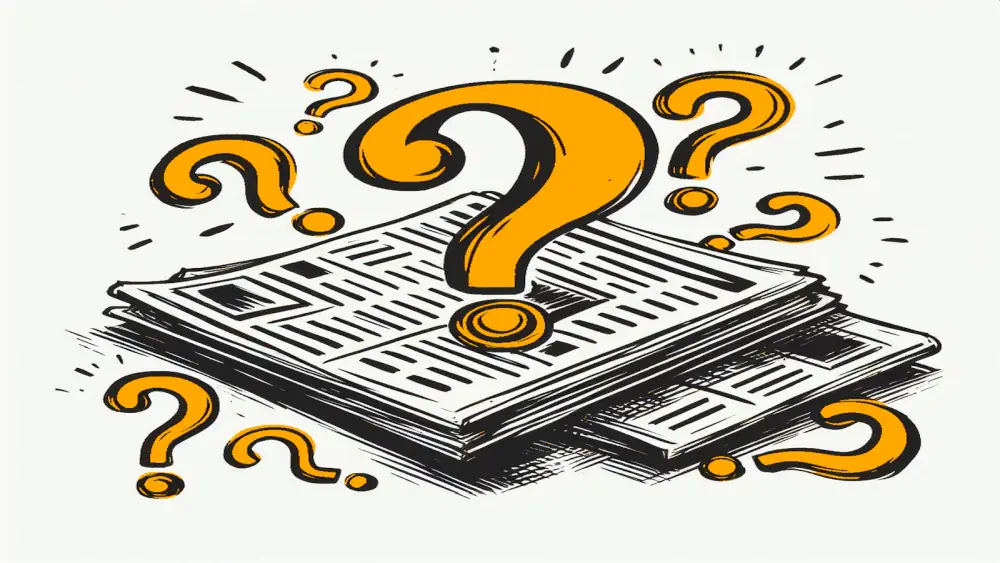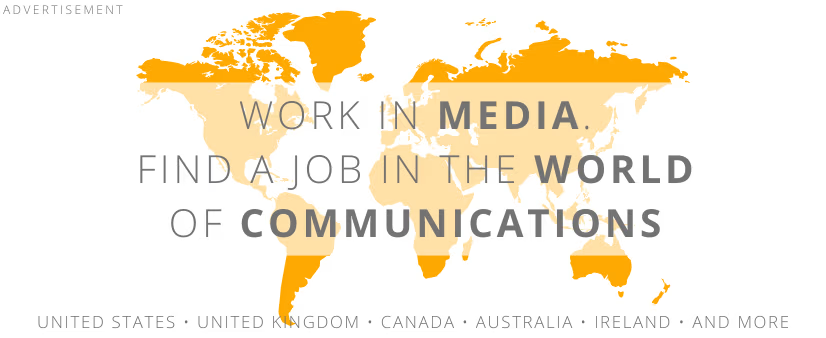 illustration: bing.com/create
illustration: bing.com/createThe hypothesis about question marks in titles is called Betteridge`s Law, Betteridge`s Rule, or Betteridge`s Principle. It was formulated by British journalist Ian Betteridge in a February 23, 2009 article on Technovia.co.uk. Analyzing an article from TechCrunch, Betteridge noted that headlines ending with a question mark are often untrue or misleading.
Titles are often crafted this way to catch readers’ attention or create a sense of sensationalism. They imply that something important or disturbing has happened, like scientists discovering a new cancer cure or the government planning new taxes, even if there’s no confirmation for such claims.
The Question Mark in Titles: Why Do They Do It?
Betteridge’s hypothesis is widely accepted by journalists and scholars. It’s used to assess the credibility of headlines, suggesting that headlines ending in a question mark should be treated with caution. However, the use of question marks in titles is more complex. Often, the goal is to grab readers’ attention or create intrigue, rather than to convey accurate information.
- Capturing Reader Attention
A question mark can draw the reader’s attention, enticing them to read the article. Headlines with question marks are often mysterious, sensational, or alarming, hinting at important or interesting information. Example: Will Artificial Intelligence Replace Humans at Work? - Highlighting Information Importance
A question mark can emphasize the importance of the information in the article. Headlines with question marks often imply that the article presents significant or controversial information. Example: Are COVID-19 Vaccines Safe? - Evoking Emotion
A question mark can evoke emotions like curiosity, surprise, or concern in the reader. Question-marked headlines are often emotionally charged, suggesting that there’s a surprise or shocking information in the article. Example: Will Global Warming Lead to Humanity`s Demise? - Delivering Information
A question mark can make information more engaging and interesting. Headlines with question marks are often more memorable than those without. Example: Do You Know How Long Cells Live in Your Body? - Legal Safeguarding
A question mark is sometimes used as legal protection, for example, against defamation claims. Posing a question rather than stating a fact can be used as a defense. Example: Did Politician X Embezzle Public Funds?
Betteridge`s Law applies to yes-or-no questions, suggesting caution when encountering question-marked headlines.
Marr, Hinchliffe, Davis: Was Betteridge the First?
While Ian Betteridge is credited with formulating the law on headlines, other authors noted this tendency before him. In 2004, British journalist Andrew Marr mentioned it in his book My Trade:
When a headline poses a question, consider answering no. Is this a true depiction of British youth? A sensible reader might answer ‘no’. Have we discovered a cure for AIDS? No; if so, the question mark would not be there. Does this map hold the key to peace? Probably not. In most cases, a headline ending with a question mark suggests the article is biased or exaggerated. It aims to scare or amplify a simple fact into a controversy, or even a national panic. For journalists seeking accurate information, a question mark means ‘waste of time’.
In the 1980s, physicist Ian Hinchliffe proposed a similar idea, leading to what is known in the academic world as Hinchliffe’s Rule. He noted that if a scientific article’s title is a yes-or-no question, the answer will likely be "no." This principle inspired a humorous take on the liar paradox in a 1988 paper by physicist Boris Kayser, under the pseudonym “Boris Peon,” titled: “Is Hinchliffe`s Principle True?”
The principle of question marks in headlines is also known as Davis’s Law, appearing under this name in 1990s literature. It’s even mentioned in the English Wikipedia, though without a source on Davis`s identity or origin.
Does Betteridge`s Law Hold True?
The key question is whether the principle of answering "no" to headline questions is… actually true. Or to what extent it holds up. Research and analyses show that the world isn’t strictly binary in this regard.
- In 2016, James Cook and Dawn Ploudre published in "Scientometrics" a study of scientific journals (not news publications) to test Betteridge’s Law and Hinchliffe`s Rule. The study found that few titles posed questions, and even fewer were yes-or-no questions, with the answer more often "yes" in the article than "no".
- A 2018 study by John Moli at the University of California, Davis, covering 2,585 articles in four ecology journals, also found few titles posed questions, with only 2.15% being yes-or-no questions. Of those, 44% answered "yes," 34% "maybe," and only 22% "no".
- In 2015, data analyst Mats Linander analyzed 26,000 articles from 13 online news sites and published his findings on his blog. The study showed that most (almost 54%) were yes-or-no questions, with approximately 20% answering "yes," 17% "no," and 16% "maybe".
The conclusion from these analyses is clear. In most cases, the rule of answering "no" to question-marked headlines doesn’t hold up. Whether called Betteridge’s Law, Davis’s Law, or Hinchliffe’s Rule, its existence points to a real issue: journalistic misuse, which frequently appears here.
So when you see a question mark at the end of a headline in a newspaper or on a website: BEWARE! There’s no certainty, but statistically, there’s a strong probability that such a sensational title is just clickbait.
COMMERCIAL BREAK
New articles in section Skills and knowledge
War reporter in the new reality. Evolving techniques, same purpose
KFi
What happens when war breaks out just across the border and journalists aren't ready? Polish reporters faced that question after Russia invaded Ukraine in 2022. Lacking training, they improvised: blurred details, hid names, and balanced trauma with truth.
A heuristic trap in media coverage. How loud headlines boost fear
Bartłomiej Dwornik
A negative message that rests on emotion lifts the sense of threat by 57%. Why do reports of a plane crash drive investors away from airline shares? Why do flood stories spark worry about the next deluge? The pattern is irrational yet clear and proven.
How LLMs are reshaping SEO. Smart content strategies for the age of AI
BDw
For years, SEO was a fairly predictable game. Pick the right keywords, optimize your content, and watch your website climb the rankings. But today, a silent revolution is underway - and it`s being led by large language models (LLMs) like ChatGPT, Claude, Gemini, and DeepSeek.
See articles on a similar topic:
Readability: Tools for Journalists to Enhance Text Clarity
Bartłomiej Dwornik
Even the most substantive content must be presented in an accessible and visually appealing way. First, so the reader can understand it. Second, to be easy on the eyes. In both cases, machines can help. Here are some tools for measuring text readability that every journalist might find useful.
It's Easier to Lie and Swear in Foreign Language. Here is Scientific Proof
Ewelina Krajczyńska-Wujec
A decision made based on data presented in a learned foreign language may be different than if you made it based on data in your native language. Language changes the intensity of felt emotions, and it affects the ability to analyse problems and choose solutions, according to research by Rafał Muda, PhD.
AI slops and microtargeting. Why wou should NOT LIKE the bread horse
Bartłomiej Dwornik
"I grew this garlic chive all by myself on the windowsill. But I bet you won't congratulate me." Do you also see an influx of such posts in online communities? Be careful. This is called AI slop (or Boomer Trap), and it is NOT just a harmless game or entertainment. It is a well-thought-out mechanism in which the currency is you. First, your time and engagement. And soon, your money.
How ChatGPT, Google Gemini, and Other Large Language Models Work
Krzysztof Fiedorek
These powerful algorithms can generate text, translate languages, write various types of creative content, and answer your questions in a way that often feels like a conversation with a person. But how is it possible for a machine to mimic human intelligence so well?





























